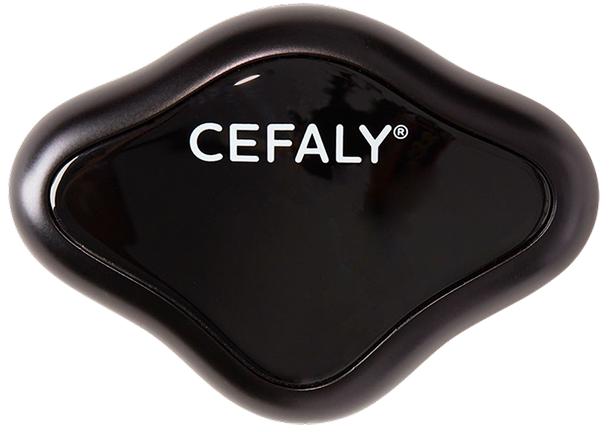To treat migraine effectively, you first need to understand your migraine. That’s why tracking is so important.
Tracking migraine warning signs, symptoms, and frequency helps you identify patterns and changes in your attacks. Armed with that information, you can refine your treatment strategy to be more effective: updating medications, taking proactive measures against triggering situations, starting CEFALY treatment at the earliest sign of an attack, etc.
Learn more about how to track migraine attacks and how the CeCe Migraine Management app can help.
Why track migraine?
By tracking your migraine attacks, you can gain a deeper understanding of your condition and take the best treatment approach. Keeping track of migraine can be beneficial in many other ways, including:
- Aiding your doctor with making a diagnosis: Getting a diagnosis for migraine allows you to receive tailored treatment and medication. For instance, you might have migraine with aura, vestibular migraine or another type. Showing your doctor details of recent attacks can help them arrive at a diagnosis quickly. The more details you provide, the more personalized medication and lifestyle recommendations they can give you.
- Helping you understand and identify warning signs and triggers: We know that for most patients, certain experiences and stimuli are associated with migraine. Sometimes these are warning signs that an attack is coming on; for example, if the lights suddenly seem too bright. Sometimes they’re triggers, such as hormonal changes or shifts in barometric pressure. Taking detailed notes about migraine attacks can help you notice overlapping factors. For example, you might notice your migraine attacks occur during spells of warm weather or after you eat a particular food. Once you identify these issues, you can take precautions to avoid them.
- Showing your treatments’ effectiveness: Tracking your migraine attacks also helps you evaluate medications and other treatments. You might try a variety of treatments before you find those that best address your symptoms. Note each treatment’s impact on your pain and other symptoms. You could also detail other side effects or lingering feelings after taking it.
- Helping you track migraine patterns: Dedicated migraine tracking lets you view overall patterns. Attacks might occur at a particular time of month or day. Or, you could uncover common incidents or environmental factors before attacks. By identifying these patterns, you can anticipate triggering events and work proactively to avoid them.

What to track for migraine?
You can make your migraine tracking as detailed as you prefer. You might only include general facts about the attack, or you could record extensive details of the entire day leading up to the attack. Your method depends on your preferences and experiences.
In general, here are some basic factors to log during migraine tracking:
1. How often you experience migraine
One of the most helpful metrics is migraine frequency. By noting every time a migraine occurs, you can track the typical prevalence in a week or month.
The CeCe app makes migraine logging easy. Just tap “Log migraine” when your attack begins, then add details once it’s over and you’re feeling better. Or, you can track migraine recurrence by using a physical calendar and noting attack times. You can plot migraine attacks over a month and view patterns over time. For instance, you might notice that attacks often occur on the same day or at a similar time.
2. Migraine triggers and warning signs
Triggers can be behaviors, stimuli, or environmental factors that spark migraine attacks. Some common migraine triggers are:
- Weather details
- Foods you consumed
- Activities
- Sleep patterns
- Stress levels
If you already know typical triggers, you could also note those in your tracking. For example, temperature changes might cause your migraine attacks. If you experience a migraine after a drop in temperature, record the correlation in your tracking notes.
Warning signs are the first indications during prodrome (the pre-attack phase) that a migraine is about to begin. Some common prodrome signs are:
- Light or sound sensitivity
- Tiredness or fatigue
- Neck pain or stiffness
- Feeling dizzy or lightheaded
Knowing your warning signs can help you start an acute or abortive treatment earlier for maximum effectiveness.
3. Length and severity
Noting the migraine’s length and severity is also helpful. You can mark the time the migraine starts and when symptoms resolve. CeCe asks you to rank your pain on a scale of 1 to 10. That way, you can evaluate migraine intensity later when you compare recent attacks.
4. Other symptoms
You should record other notable symptoms during the migraine, such as:
- Length or severity of aura
- Feelings of nausea
- Numbness throughout the body
- Dizziness
- Difficulty with speech
These non-pain symptoms — often called “most bothersome migraine-associated symptoms” — can have a major impact in your quality of life. Talk to your doctor about how best to treat them.
5. Medication and treatments used
You can note any medication or treatment you used before or during an attack. List the treatment used and then detail how it impacted symptoms. You might use a treatment device like CEFALY to relieve pain, or prescription/over-the-counter medication. By tracking these treatments, you can determine which ones work best.
Get Drug-Free Migraine Relief With CEFALY
Shop Now
90-day money back guarantee
FDA-cleared
financing available
How to track migraine attacks
You can use a variety of strategies to track your migraine attacks.
- Keep a journal: Many people with migraine use handwritten journals to track their attacks. As soon as an attack begins, note things that occurred throughout the day that might have triggered an attack. You can make entries as detailed as you prefer. Some users write details about their food intake that day, their sleep patterns or the activities they had completed recently. A migraine diary is also helpful for doctor’s appointments. You can show your doctor the notes or use them to recall specific details about previous attacks.
- Use a spreadsheet: Others use spreadsheets to organize notes about migraine attacks. You can record each migraine in an accessible chart separated by rows and columns. For instance, include a column for the migraine date, time and other symptoms. The chart allows you to view the basics of recent migraine attacks simultaneously. It’s also an excellent document to share with your doctor during appointments.
- Integrate other tools: Other common apps can help you monitor migraine. A wide range of factors can trigger migraine attacks, from weather changes to menstrual cycles. So, you can combine your migraine-tracking efforts with other apps you use daily. You could integrate a period-tracking app with your migraine tracking to evaluate whether your menstrual cycle influenced a migraine. Or, weather apps can inform you of recent and upcoming changes in temperatures. You could also use food-tracking devices to evaluate how your diet influences migraine frequency.
- Use the CeCe app: With CEFALY’s CeCe app, you can track your migraine attacks, CEFALY Connected treatments, and other info in an easy-to-use interface. Easily log your migraine attacks with details about triggers and symptoms. CeCe can generate personalized reports to show patterns in your migraine attacks, which you can share with your healthcare provider. You can also complete journal entries to take specific notes on attacks.
Learn more about CEFALY and the CeCe app
Migraine tracking is essential for an effective treatment plan. With consistent notes, you can identify triggers, track medicine effectiveness and more. With the CeCe Migraine Management app, you can understand your unique migraine patterns better than ever before.
Use CeCe to:
- Monitor and control your CEFALY Connected treatment sessions
- Optimize the stimulation intensity level
- Log migraine attacks
- Maintain a migraine journal
- View detailed charts and graphs about migraine progression
- Get push-notification treatment reminders
- Download PDF reports to share with your doctor
CeCe is available in the Apple App Store and the Google Play Store. Get started with CeCe by downloading it today.













